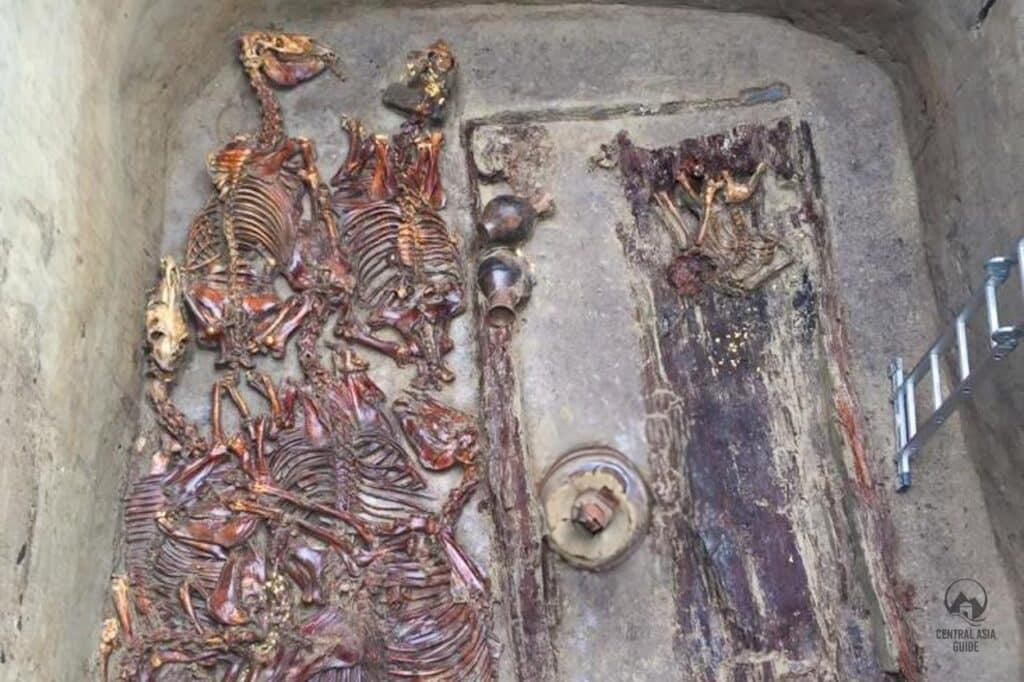Valley of the Kings - Kazakhstan
Berel Burial Mounds
At a height of 1120 meters, seven kilometers west of the village of Berel, Kazakhstan, a fully preserved body of a Scythian price was discovered in one of 36 kurgans, funeral barrows scattered over the daisy-strewn meadows of the valley floor. The next found body was the father of the first body, but today considered his mother, and two horse burials of 13 and 17 animals with richly adorned bridles, ornamented harnesses, saddles and even headdresses were laid around the human remains.
Dating to the 3rd-4th centuries BC, archaeologists from the Institute of Archaeology of the Kazakh Academy of Sciences and the National Research Centre of France found many objects alongside the bodies, from which they learned much about the Scythian way of life. They included wooden tables with carvings, gold jewelry, felt and wool rugs, and household tools. The excavators suspected that the ancient Scythians used special technology for building the kurgans, which allowed the bodies of the deceased to freeze swiftly, thus preserving them in amazing condition. (One horse, upon exhumation, was so well preserved that red meat was still present on the corpse.) In summer, the soil defrosts only down to 2-4 meters at this altitude; the kurgans were constructed in such a way that their chambers are in a Permanently frozen state.


Locals called it the Valley of Tsars, this is a sacred place, and it also had special significance for later nomads, since grave mounds were still constructed here during the first millennium AD. The kurgans are spread out but in clusters; there is no infrastructure ere at all no buildings can be seen nearby-only the stone mounds surrounded by 8 feen grass and forested mountain slopes. It is an idyllic spot, there is little to see at the kurgan sites-Kurgan No 11, where the prince was found, is simply a mud- and water-filled crater surrounded by stones-but the location and an atmosphere of antiquity make it a worthwhile stop. Not all of the kurgans have been excavated, so some might still be there and waiting to be discovered under the frozen valley soil.
Travel to Beren Burial Mound
When you arrive at Katon Karagai National Park head eastwards through the attractive Bukhtarma Valley to the village of Uryl, 60km to the east. The Uryl village is located in the border zone starts so you need to get an entry permit from any travel agencies in Oskemen. At this point, the road condition worsens, as the route heads northwards to Berel, 18km away. Belaya Berel and Bukhtarma Rivers connected just outside Berel village.
Other Sights and destinations near Valley of the Kings
Page updated 2.7.2024